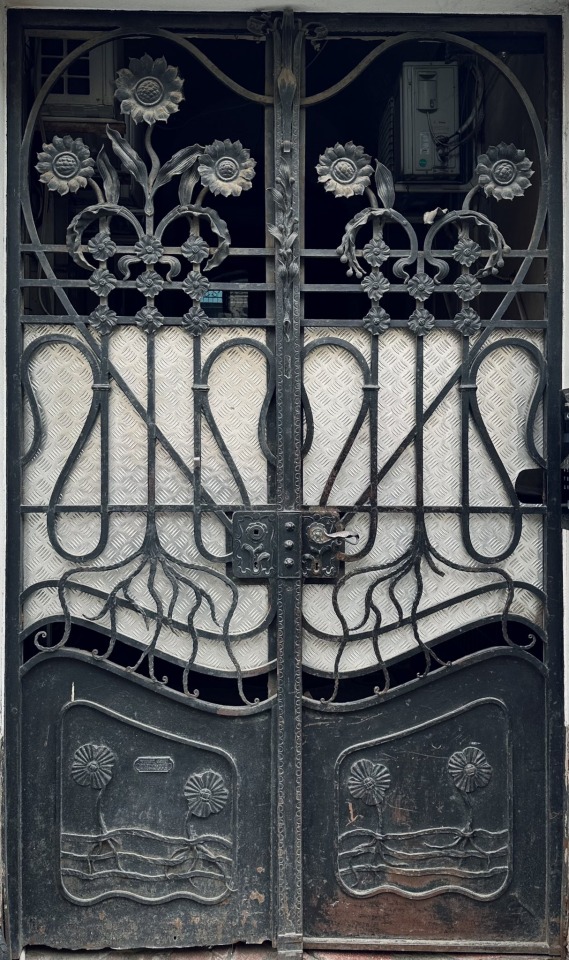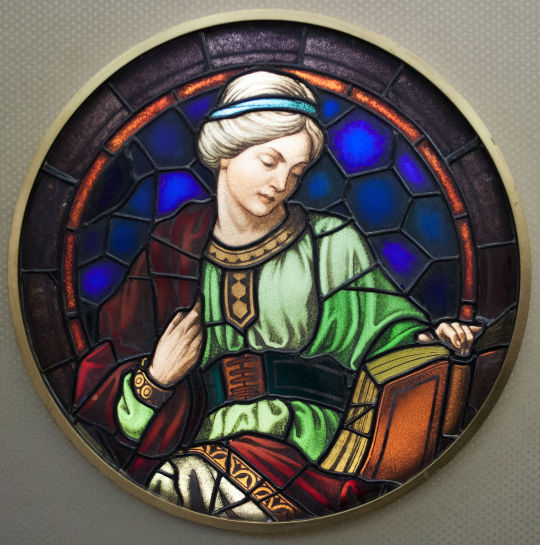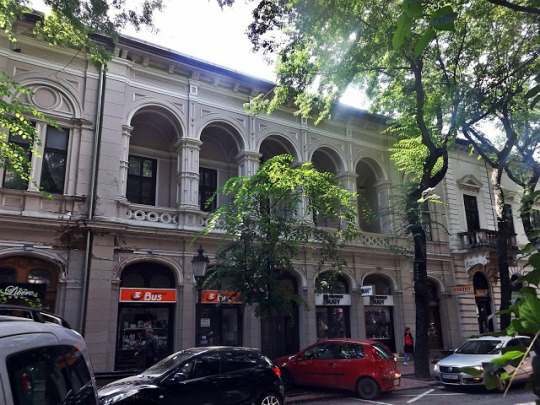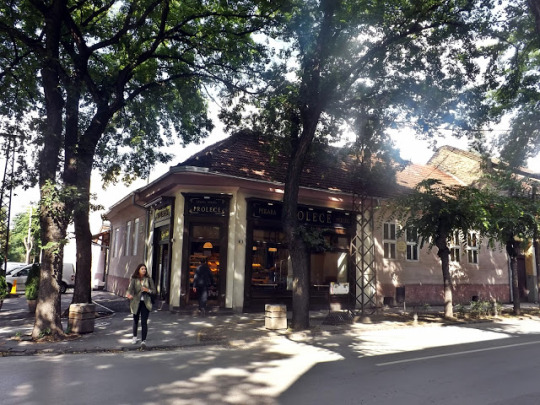#hungarian secession
Text


1910s Art Nouveau gate in what is today Oradea, Romania
37 notes
·
View notes
Text

Koloman Moser (1868-1918), ''Ver Sacrum'', #1, 1898
Source
#koloman moser#Hungarian artists#ver sacrum#art nouveau#vienna secession#vintage illustration#what does “vintage illustration” even mean?#Gotta find some new tags
143 notes
·
View notes
Text
The Black Eagle Tower in Oradea, an excellent example of the captivating Secession Style

The Secession style is part of the Art Nouveau movement. It originated in Vienna, Austria, and is also known as the Vienna Secession. The style features a mix of organic and geometric forms, with a strong focus on craftsmanship and attention to detail.
Feel free to post this information along with your photos in the comments.
#romania#eastern europe#europe#photography#history#curators on tumblr#details#oradea#vulturulnegru#wiener secession#vienna secession#art nouveau#austria#austria hungary#austro hungarian empire#organic#geometric#architectural styles#architecture#towers
24 notes
·
View notes
Text

art nouveau mcdonalds // subotica, serbia
66 notes
·
View notes
Text
making a Miska Róth post because I first saw his work today and the tag search came up empty. Look at his work!



wiki: Miksa Róth (26 December 1865 – 14 June 1944) was a Hungarian mosaicist and stained glass artist responsible for making mosaic and stained glass prominent art forms in Hungarian art.[1][2] In part, Róth was inspired by the work of Pre-Raphaelite artists Edward Burne-Jones and William Morris.[2]
4 notes
·
View notes
Note
there are FOUR dragons on the dragon bridge in ljubljana, slovenia. one on the city's coat of arms, too
OK So I went to Google to look this up, and-
"""The Dragon Bridge is a road bridge located in Ljubljana, the capital of Slovenia. It crosses the Ljubljanica River between Kopitar Street and Ressel Street to the north of the Ljubljana Central Market at Vodnik Square. It was built in the beginning of the 20th century, when Ljubljana was part of the Austro-Hungarian Empire. As one of the best examples of reinforced concrete bridges and of the Vienna Secession style, the bridge is today protected as a technical monument. It is intended primarily for motorized traffic."""

"""The chief attraction of the bridge are these four dragon statues standing on pedestals at its four corners. In addition, the bridge is decorated by sixteen smaller dragon statues."""
That's TWENTY Dragons! Waoh. . Drgouns. ..
36 notes
·
View notes
Text

Piece of Hungarian secession...entrance to Hotel Zara, former Hungaria Bath in Budapest
3 notes
·
View notes
Video
youtube
https://www.youtube.com/watch?v=IbNu2k4TmZU
A wonderful little bit of animation to accompany a Romanian Doina. From the video description, the artists explain:
“The musical form that both klezmer musicians and Romanian musicians call "doina" (an improvised-sounding, soloistic melody without an underlying rhythmic pulse) stems from a shepherd's flute melody. In this video, we took inspiration from Transylvanian shepherds, as well as from the visual language of artifacts left behind in the synagogue in Mediaș (with help from Răzvan Anton, who worked with these artifacts).
“We also took inspiration from the work of Jakab Dezső and Marcell Komor, two influential Jewish architects in the Hungarian Secession style. They built many wonderful buildings in Transylvania, including the Black Eagle Palace in Oradea (Nagyvárad) and the Palace of Culture in Târgu Mureș (Marosvásárhely).”
6 notes
·
View notes
Photo

Otto Friedrich (1862 - 1937) Hungarian
"Wie sie sind"- As they are c1902
This work is from the cycle ‘Menschen’ (Humans). The painterly execution is reminiscent of other important works by Friedrich from this period, such as Eitelkeit (Vanity) and Eva, also exhibited at the Berlin Secession in 1906.Little is known about the artistic education of Friedrich, as the first mention of the artist relates the gold medal that he won in Berlin in 1887. He is next recorded as working in Munich where it is believed he spent the remainder of his artistic career.Friedrich was inspired stylistically by Lovis Corinth (1858–1925) and Max Slevogt (1868-1932).(In the cycle ‘Humans‘ Friedrich presents himself as painter of ideas. The most accomplished works in this cycle is As they are. A group of naked women, whose bodies and postures aim to reveal their souls)
via: https://www.facebook.com/artmialma
39 notes
·
View notes
Text
book club - July
keeping a little record for myself
feel like I say this every time, but really an abysmal showing at reading women writers. More abysmal than usual, even.
1. L. P. Hartley - The Go-Between (1953): Honestly I don’t remember an awful lot about this - I know I enjoyed it and there’s a cracker of a cricket match - one of the great sport scenes of literature?
2. Geoff Dyer - Out of Sheer Rage (1997 - reread): Was puzzled by this the first time I read it. On reread, I think it’s mostly solipsistic and boring. Dyer not as interesting a subject as D. H. Lawrence - even though it’s missing the point, I would rather have read Dyer’s unwritten book about D.H. than his book about not writing a book about D.H. Although he does, occasionally, have some great observations about old D.H., and has strengthened my conviction that although I don’t think Lawrence’s books are good, always, necessarily, I feel a sort of grudging affinity with him (whereas, although I like or even love a lot of E.M. Forster, I am fundamentally antipathetic to his spirit).
3. Szczepan Twardoch - The King of Warsaw (trans 2020): Some of this was really, really fun, but both twists were absolutely awful. Like, you can’t really supply a more harrowing twist to a novel about Jewish gangsters in Warsaw in 1937 than the one that we know is inevitably, historically coming. If you ignore the weird twist the main story could have been good, but the framing device was just awful.
4. Joseph Roth - The Radetzky March (1932 - reread): I went to Vienna at the beginning of July so got very into Mitteleuropa. I found this book very dull when I read it at about 16 - loved it on rereading. Fathers, sons, the historical weight of a crumbling empire, duelling, Austro-Hungarian army officers - what more could anyone want?
5. Bruno Schulz - The Street of Crocodiles and Sanatorium Under the Sign of the Hourglass (1934, 1937): Very Kafka (a kind of softer, more expansive Kafka?- and Schulz translated Kafka into Polish, I think). Love the shorter stories and the ones more concretely set in Drohobycz - less keen on the stories and novellas in Sanatorium Under the Sign of the Hourglass.
6. Frank Tallis - Vienna Blood (2006, reread)
7. Frank Tallis - Fatal Lies (2008, reread) - Fun Secession-Vienna set murder mysteries. Reread back in London while on Covid sickbed having caught it at the Vienna State Opera. Would have to be syphilis for the full Viennese experience, though.
8. Benjamin Myers - The Gallows Pole (2017) - Very taken by this. Historical novel about 18th century coiners in Yorkshire on the brink of the Industrial Revolution. Fun, overwritten prose - Myers thinks he’s Ted Hughes - but I am a sucker for this kind of revisionist - what would be the equivalent of Americana? Anglicana? Do find the trend for these very violent, very niche, self-consciously masculine historical novels quite funny but can’t complain as I am writing one myself.
9. Ben Galley - Lester Young. Cannot find any information on this online so suspect I may have misrecorded author’s name. But it was the rare short, well-written, perceptive jazz book with good selection of recordings as well as thorough discography. Oh, Pres! What a sound!
10. Adam Phillips - Missing Out: In Praise of the Unlived Life (2012): Enjoyed this a lot when he was, like, explaining psychoanalysis, although really (like most of Phillips’ work) it’s a bit of a rag-bag of essays and he’s a better second-order explainer than he is at doing original work. He is, though, a supremely gifted and entertaining explainer of others’ work (I’d compare him to Terry Eagleton). His literary criticism is interesting if insubstantial, though, especially because when I was ‘doing’ literary criticism I never really worked from a psychoanalytical standpoint.
11. Nick White - How to Survive a Summer (2017): Brandon Taylor-recommended, pretty rubbish really. Never really followed through on the O’Connor style grotesqueries I was expecting - a much softer book than I’d thought it was going to be, which is maybe more a mismatch of expectation to material, but - rather lightweight.
12. Eliza McFeely - Zuni and the American Imagination (2015): Boring book but fascinating subject. Read like a Master’s dissertation or something - not even quite a PhD.
13. T.H. White - The Sword in the Stone (reread)
14. T.H. White - The Witch in the Wood
15. T. H. White - The Ill-Made Knight: These are great. I loved The Sword in the Stone as a child (book and film), and really enjoyed the next two as well - think I may have originally read a different, shorter version of The Sword in the Stone. I love how much it reads like a Nancy Mitford novel, as well.
16. Jonathan Coe - Mr Wilder & Me (2020): Rubbish. Ordered second-hand to flat by my dad after we’d been discussing Billy Wilder. Very easy read, but flat-out bad. Might go and see the film adaptation if it ever gets made, though.
17. Bruce Chatwin - The Viceroy of Ouidah (1980): Another second-hand boon from my dad. Not sure what prompted it. Enjoyed a lot, although can only imagine da Sousa as Klaus Kinski following Herzog’s Cobra Verde - although think a lesser film that his others with Kinski).
18. Mieko Kawakami - Breasts and Eggs (2008, trans 2020): Breasts section great. Second section about sperm donation much longer and much less compelling.
19. Oliver Sacks - The Man Who Mistook His Wife for a Hat (1985): Enjoyed very much, although the puritan in me suspects I should be reading Luria instead.
4 notes
·
View notes
Text
Some 3,400 people including armed police officers, members of civil protection services, war veterans’ associations and members of sports clubs paraded through the streets of Banja Luka on Tuesday to mark the Day of Republika Srpska – a highly controversial celebration of the anniversary of the foundation of Bosnia’s Serb-dominated entity.
Despite two rulings by Bosnia’s state-level Constitutional Court that declared the Day of Republika Srpska illegal, Bosnian Serbs led by the entity’s President Milorad Dodik have continued to organise the annual event. This year’s festivities cost 332,000 euros – 100,000 more than in 2023.
The parade was accompanied by armoured police vehicles, police cars, helicopters and, for the first time, a drone show. Critics of Dodik see the display as a secessionist show of defiance aimed at undermining the state of Bosnia and Herzegovina.
The celebration concluded with a concert and simultaneous fireworks in all the cities and towns in Republika Srpska. There was also a firework display in the Serbian capital Belgrade to mark the Day of Republika Srpska, highlighting the Serbian government’s support for Dodik’s secession-threatening regime.
In a post-parade speech, Dodik said that “nobody can tell us not to celebrate our day”.
“We don’t want conflicts, we want these police officers to defend our freedom and our houses while we sleep peacefully. Ours and that of everyone else who lives on this territory,” he added.
The Day of Republika Srpska celebration was a three-day series of events including an awards ceremony in Banja Luka, at which Dodik announced that he was giving the Order of Republika Srpska to Hungarian Prime Minister Viktor Orban, amongst others.
“The prime minister of Hungary, Viktor Orban, has agreed to receive Republika Srpska’s highest decoration. This is a source of pride for Republika Srpska and gratitude towards a man who is willing to acknowledge us as a legitimate political entity,” said Dodik.
The same award was given to Russian President Vladimir Putin in 2023.
The January 9 holiday commemorates the 1992 declaration by Bosnian Serbs, establishing Republika Srpska. But for many, the date signifies the commencement of the 1992-1995 Bosnian war, which claimed around 100,000 lives and displacing approximately 2.6 million individuals.
The state-level Constitutional Court later deemed the declaration unconstitutional as it exclusively represented the Serb population, neglecting the other ethnic groups residing in Republika Srpska, noting that the holiday itself is not problematic, but the date on which it is held.
In June last year, the National Assembly of Bosnia’s Serb-dominated entity passed a law declaring rulings of Bosnia’s Constitutional Court non-applicable in the entity.
But a few days later, the High Representative Christian Schmidt, the international overseer of Bosnia and Herzegovina’s peace agreement, annulled the law and imposed changes to Bosnia’s criminal code introducing non-compliance with the decision of the Constitutional Court as a criminal act punishable up to five years in prison.
On Tuesday morning, the US embassy in Sarajevo issued a statement recalling that the Day of Republika Srpska celebration “constitutes a criminal offence”.
“This is a matter of law, not someone’s opinion. The United States expects that relevant law enforcement and judicial institutions will conduct investigations into any cases of law violations associated with the celebration of Republic of Srpska Day on January 9th,” the US embassy added.
On Monday, US Air Force and the Bosnian Armed Forces held a joint military exercise, with US F16 fighter jets flying over Bosnia in show of support for the country’s territorial integrity of amid what the embassy described as “secessionist activities”.
Many in Republika Srpska saw the US exercise as a provocation and Dodik claimed that Washington is “waging hybrid war against Republika Srpska”.
1 note
·
View note
Text

Église Sainte-Élisabeth, Bratislava, Slovaquie

L’église Sainte-Élizabeth, également connue comme « église bleue », est un sanctuaire catholique de la ville de Bratislava, capitale de la Slovaquie. Caractéristique de la Sécession hongroise et édifiée en 1907-1908, l'église est consacrée à Élisabeth de Hongrie.
L'église est l'œuvre de l'architecte hongrois Ödön Lechner. Elle est construite en 1907-1908, sur la base de plans dressés par Lechner quatre années auparavant, dans le style Art nouveau hongrois. Basée sur un plan simple, l'église doit à l'origine intégrer une coupole, laquelle n'est jamais construite. La façade est tout d'abord peinte de couleurs pastels ; la couleur bleue caractéristique de l'édifice n'est employée que par la suite.
L'église est consacrée à Élisabeth de Hongrie (1207-1231), fille d'André II de Hongrie et canonisée en 1235, qui grandit au château de Bratislava.
Une reproduction de l'église représente la Slovaquie au parc Mini-Europe de Bruxelles.
****
St. Elizabeth's Church, also known as the Blue Church, is a Catholic shrine in the city of Bratislava, the capital of Slovakia. Characteristic of the Hungarian Secession and built in 1907-1908, the church is dedicated to Elizabeth of Hungary.
The church is the work of Hungarian architect Ödön Lechner. It was built in 1907-1908, based on plans drawn up by Lechner four years earlier, in the Hungarian Art Nouveau style. Based on a simple plan, the church was originally to incorporate a dome, which was never built. The façade is first painted in pastel colors; The characteristic blue colour of the building is only used afterwards.
The church is dedicated to Elizabeth of Hungary (1207-1231), daughter of Andrew II of Hungary and canonized in 1235, who grew up in Bratislava Castle.
0 notes
Text
Oct 24: First few weeks in Timisoara
Sorry for the few weeks’ silence! I’ve been settling in in Timișoara over the past few weeks, setting up my dorm, prepping my first few classes, and taking care of some paperwork. That said, I’ve also had plenty of time to explore!
I’ll post a few photosets after this compiling some of what I’ve seen: some of the beautiful Secession/art nouveau architecture in Timișoara’s downtown, some of the interesting graffiti I’ve seen around town, and then just some pictures of food. So below I’ll post some general thoughts.

Here’s the Bega river! It’s got walking paths along both sides for miles, so I’ve been spending lots of time walking and reading along the Bega, so really living up to the blog name here.

Piața Victoriei is at the south end of Timișoara’s old town area, so it’s closest to me and the university. The massive Orthodox Cathedral (shown above) sits at one end of the square, and the modernist Palatul Culturii (below) at the other. It may seem like a contrast between old and new buildings, but the façade on Palatul Culturii was constructed in 1936, the same year ground was broken on the Orthodox Cathedral, which was consecrated in 1940.
The Orthodox Cathedral was one anchor for protestors in the 1989 Timișoara uprising. For people other than my parents reading this, Timișoara was the first city to have an uprising in the Romanian Revolution that would oust Ceaușescu.

In between the Cathedral and the Palace of Culture are statues that touch on opposite ends of Romanian history. The statue in front of the Cathedral was erected in 1999, on the tenth anniversary of the revolution, while the statue in front of the palace is of Romulus and Remus.
Palatul Culturii also gives us a sense of the multiple cultures present in the city. Driving into Timișoara, you can see a number of words for the city: Timișoara is also Temeswar in German, Temesvár in Hungarian, or Темишвар/Temišvar in Serbian. Timișoara is very close to the Serbian and Hungarian borders, so that presence is definitely felt. The Palace of Culture hosts the Romanian National Theater and Opera as well as the Hungarian State Theater and the German State Theater. So you don’t have to go to the Maria Theresa bastion in the city to get a sense of the Austro-Hungarian influence on the city.
You can see a lot of construction going on in the square, and I wonder how much of it is meant to be finished by 2023, when Timișoara is officially made European capital of culture. We’ll have to see.


Lastly, here’s two pictures to give you a sense of my daily life: the first is the view from my dorm, and the second is my walk to school. I’ve really enjoyed starting to teach! It’s been fun meeting my students and starting to hear their thoughts in class, so it should be a great semester. :)
0 notes
Text
Beautiful Subotica
This Autumn we happened to come for a walk around the historical center of Subotica, a picturesque town in Vojvodina province of Serbia, located not far from the Hungarian border.

Many buildings in the center of Subotica were built in the beginning of the 20th century in Hungarian Secession style, which I really admire!


↑ I am loving such style of shop-windows looking like protruded glass cases in wooden frames... They feel very nostalgic and draw me on like magnets :)

↑... a beautiful coffee spot attracting with sunny-yellow sitting area...


… I feel so much interest in historical architecture with its aura of mystery calling to explore unique stories old buildings possess… Even simply leafing through photography books is always inspiring!



↑ A cosy looking bakery "Proleće" (means "Spring") discovered somewhere not far from the town's center...

1 note
·
View note
Text

Gem of the Hungarian secession, Körösssy villa, Budapest
4 notes
·
View notes
Photo


Aladár Körösfői-Kriesch, 1905
282 notes
·
View notes